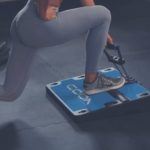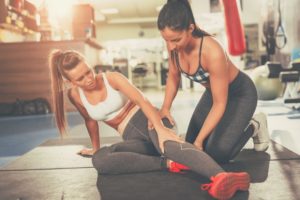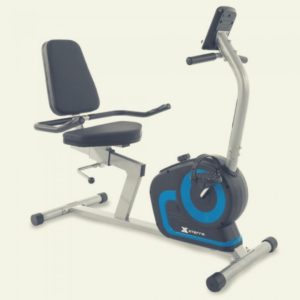Going to the gym to work on your glutes can be an exciting time with all the options they provide you with to do so.
However, after months of doing glute exercises at home, or perhaps you’re new to glute training, you may wonder what are some glute strengthening exercises for the gym?
In which case, we hit the digital pavement to find out.
No matter your fitness level, research shows that glute strength should be a priority for improved stance, mobility, and power to lift and perform physical activities with decreased risk of injury.
They add that it can also help reduce certain types of pain, including lower back pain, neck pain, and poor posture due to tight hip flexors.
Many trainers state that even their clients who are active have some degree of glute weakness, which can be caused by various factors, including sitting long hours at work each day, thus leading to desensitization of the butt muscles.
Hence, the following glute strengthening exercises for the gym are what they recommend to their own clients to help correct glute weakness, inactivation, and imbalances.
6 Glute Strengthening Exercises For the Gym
- Sumo Squat
- Sumo Leg Press
- Bulgarian Split Squat
- Glute Kickback
- Barbell Hip Thurst
- Hip Extension
Sumo Squat
The sumo squat is a great lower-body strength exercise that emphasizes the muscles of the glutes.
However, it also strengthens the inner thighs, hip flexors, hamstrings, quads, and calves for improved overall fitness and more.
Sumo squat adds an additional challenge to your balance because your body needs extra stability to keep from moving forward and back on the heels, which also helps increase your core strength.
To do this move:
- Stand in a wide stance with your feet shoulder-width apart and your toes pointed out at a 45-degree angle.
- Take a deep breath to engage your core, and then lower your hips back into a squat with your hands clasped in front our your chest.
- Hold the position at the bottom with your hips and knees aligned. However, don’t let your knees extend past your toes, and your shins should also be vertical.
- Exhale to stand, pressing into the heels and outer soles of the feet.
- Continue the move 12 to 15 times for a total of 4 sets.
Another New York City-based trainer also featured in Shape states that once you’ve mastered the move using your own body weight, you can then add dumbbells or kettlebells to the move at the gym.
To do so, hold the weight in both hands so that it hangs between your legs, and then perform the move for added challenge.
Or you could also hold the weight in front of you or over your shoulders for the same results.
Sumo Leg Press
The sumo leg press is similar to the sumo squat in that it also works your inner quad muscles and glutes.
It also helps build the upper legs, leg bones, hamstrings, and knee and hip joints for improved overall length strength and mobility.
However, it uses the resistance of the leg press to strengthen your muscles, which helps take the pressure off the back and knees for more spot targeting and challenging of the glutes, and more.
Thus, it is also great for those with back and knee issues that can be exacerbated when doing regular squats, provided you use the leg press properly.
To do this move:
- Begin in a sitting position on the machine. Place both feet on the plate in a wide stance, a little more than shoulder-width apart, and your toes pointed out.
- Push the plate away from you with your feet until it unlocks.
- Take a deep breath, and then bend your knees to lower the plate back down towards you. Stop once your knees nearly touch your chest.
- Breath out, and then press the plate up until your legs are almost straight. However, avoid locking your knees because it puts undue stress on the joints, which can cause an injury. You also need to ensure your knees and toes remain aligned at all times to prevent pain.
- Continue the exercise until you reach your desired number of repetitions, and then lock the plate back into its starting position.
Bulgarian Split Squat
Bulgarian split squats are a favorite of many personal trainers for strengthening the glutes because the elevation changes that occur as you work on the legs allow you to activate every muscle in your lower body with just one squat.
In fact, they are even more effective at firing up the glutes than regular lunges or squats.
Studies show that they’re also a great alternative for those who typically experience knee pain when doing barbell squats because they put minimal pressure on the knees, as well as the ankles.
They also put less pressure on the spine, which helps prevent back pain.
Meanwhile, another study published in the US National Library of Medicine showed that the addition of a dumbbell in each hand while performing the move enables you to get muscular balance on each side of the body. It also helps you maintain stability throughout the move.
To do this move:
- Stand facing backwards 2 to 3 feet in front of a knee height bench.
- Extend your right leg behind you up and onto the bench, anchoring yourself with the top of your foot. With your shoulders and hips squared and aligned and your core embraced, squat down until your right knee becomes parallel with the ground.
- Keep your weight balanced throughout the center of your foot, and avoid leaning forward.
- Press through your heels to return to standing.
Glute Kickback
Glute kickbacks are also a prized move recommended by trainers to help strengthen the rear end because they specifically target the buttock muscles, unlike the squat, deadlift, and other exercises.
This exercise can be done on the floor, or you can use the cable machine at your gym, which will also enable you to help improve your balance.
To do this move on the floor:
- Get onto the floor on all fours with your core engaged and your spine straight.
- Stretch your right leg back and up, with the bottom of your foot facing the ceiling, until your thigh is in line with the floor.
- Squeeze your right buttock with your thigh lifted and hold it for a few seconds to feel the burn.
- Lower your leg back down to the starting position, but don’t let your knee touch the ground, and then repeat the move.
- After 10 to 20 repetitions on the right leg, switch to the left leg.
To add weights to this move, simply place a small dumbbell behind your knee and then tighten the grip with your leg to help it stay in place.
Or, if your gym has a dedicated glute machine, simply use it to perform this move for added resistance.
To do this move using the cable machine:
- Attach the ankle cuff attachment of the pulley to your leg, and then stand with your feet together.
- If you need to, grab onto the cable machine to help maintain your balance, and then leaning forward a bit with your back straight and your core engaged, kick the cuffed leg up and back with steady control until it is aligned with the floor and your upper body.
- Contract the gluteal muscle at the top and hold it for a few seconds to feel the burn, and then slowly bring your leg back down to the starting position.
- Repeat the move for the same number of reps on the other side to work both sides evenly.
One certified trainer stresses, when doing this move, it is important to keep your back straight and avoid using too much weight because it can cause you to use your body to lift the weight as opposed to your glutes, which can prevent you from getting results.
Barbell Hip Thurst
The barbell hip thrust is the most beloved exercise for glute strengthening among many fitness experts throughout the industry because, like glute bridges, its unique form enables you to create more tension at peak hip extension for greater activation of all the major glute muscles.
Research shows that it is also another great alternative to barbell squats for those with shoulder, neck, lower back, or knee issues because it enables you to strengthen the gluteal muscles without putting too much pressure on the upper and lower body.
It also helps strengthen the hip extensions, which are important for standing, walking, and peak athletic performance.
To do this move:
- Place a barbell about 2 feet in front of the knee-high bench.
- Position yourself on the bench so that your upper back is against the flat surface, and then roll the barbell up over your legs until it is lying across your hips. Or you can also use a weighted bar.
- Then, with your feet planted firmly on the ground close to your glutes, press through your heels to push your hips up until you achieve a bridge position. However, be sure not to let your lower back become overextended.
- With slow, deliberate action, lower your hips back down until they are about 1 to 2 inches above the ground to maintain tension, and then repeat the move from this position.
- Repeat the move 12 to 15 times for a total of 3 to 4 reps.
Hip Extension
Cable pull-throughs are a great hip extension exercise that top trainers often recommend to help open and lengthen the front of the hips, and they also help strengthen the glutes and hamstrings for improved stability and balance while walking, running, and more.
They also enable you to work all the back of your lower body muscles without putting too much stress on the spine and back.
To do this move:
- Be sure the pulley on the machine is set to the lowest setting, and then with your back turned to the machine, reach between your legs and grab the cable.
- Walk forward a few feet until the weight is lifted off the stack.
- Then, with your posture tall, your knees slightly bent, and your feet a bit wider than shoulder-width apart, grip the floor with your feet and bend your hips forward until you feel a stretch in the back of your legs.
- Hold the position while contracting your glutes.
- Slowly return to the starting position.
Best Home Glute Training Devices
Not everyone can make it to the gym to do glute training exercises on a regular basis. For those days you want to train your glutes at home, here are a few glute training devices we recommend.
| Sunny Health & Fitness Squat Assist Row-N-Ride | COBA Glute Trainer | bootylux Booty Lifter |
 |
 |
 |
| The Sunny Health & Fitness Squat Assist Row-N-Ride is perfect for those who want to achieve the perfect squat for compound exercises. | The COBA Glute Trainer is a must-have for anyone who is serious about shaping their glutes to perfection without putting stress on their knees. | The bootylux Booty Lifter is for those looking for something lightweight and quick to set up and use. |
 |
 |
 |
Final Thoughts
Experts conclude that the best way to train your glutes for improved strength is to set aside at least one full day of your weekly routine to leg day, during which time you should also incorporate exercises that target your buttock muscles.
They also stress that at least half of your leg day should be devoted to training your glutes. Glute exercises can also be added as part of your cardio on other days.
However, it’s best to give your glutes and lower body muscles a rest day in between your workouts to give them time to recover and for muscle cell growth to kick in.
So, hopefully, this brief tutorial of the top-rated, trainer-approved exercises for strengthening the glutes has left you motivated and looking forward to hitting the gym for serious kick-butt action!
And as with any fitness program, be sure to also follow a nutritious diet for faster and optimum results.



